A Tale of Two Sensors. Micro 4/3 and Full Frame?
By Steve Huff
Last week as I was shooting the Olympus PEN-F and Pana/Leic 12mm f/1.4 Summilux ASPH I realized I was in the same area/place/spot that I was in when I was shooting the Leica M-D and 28 Summuilux f/1.4 ASPH. I even snapped the same image, one with the Leica and 28 and one with the Pen-F and Panasonic 12mm. Same subject (Debby), same post (similar) but a couple of weeks apart, different light and a different day. BUT, these two shots do give a hint at what one can expect when it comes to sensor size.
As enthusiasts and pros and camera geeks like me (and many of you) know, Micro 4/3 cameras offers smaller than full frame or even APS-C sized sensors. In the world of Micro 4/3 users, well, I find them to be some of the most happy and satisfied camera users around. Why? Well, not 100% but I do know that these Micro 4/3 bodies are very FUN to use. They are fast, responsive, have great lenses available and give a wonderful quality that far surpasses any smart phone and they are small, light and powerful. They do have weaknesses that still persist today though and the biggest one for most that I speak with is low light/high ISO. With M 4/3 this is not the best, usually topping off at 3200 for me, but I usually stop at ISO 1600 to be safe. In comparison, I can shoot ISO 50k on a Sony A7SII and be happy 😉
But then we have the larger sensors like APS-C, Full Frame, Medium Format…
The larger the sensor, the better things get such as low light performance/high ISO, dynamic range, depth of field control (can get super shallow if desired), richness and depth of file, 3D pop, and even color to some extent depending on lens used.
BUT with full frame sensors come other things some may not find desirable…like SIZE of lenses. Sure, we can get compact-ish bodies in the full frame world but the lenses, for the good ones anyway, always seem to be HUGE! So with the full frame benefits come larger size, heavier weight, and some find the shallow depth of field a negative as it can be tough, when using a fast prime, to get all of your subjects in focus. Many shoot wide open at f/1.4 on a micro 4/3 and get all of their subject in focus due to the DOF of micro 4/3 being larger, as in LESS BOKEH AND BLUR in the background. With full frame, one needs to stop down to f/2.8 or even f/4 to get their subjects in complete focus, and even at f/4 we can get some nice shallow DOF with full frame.
The HUGE Leica 90-280 Lens for the Full Frame SL. A Beast in Size and Weight but Amazing Performance.
So their are pros and cons to each, one of the biggest pros for Micro 4/3 vs Full Frame though is price. A full frame setup from Leica, Sony, Nikon or Canon can put a dent in that wallet, especially when adding great glass (which I feel full frame cameras need). With M 4/3 one can buy something like a Panasonic GX85, throw in a 15 1.7, 42.5 1.8 and 75 1.8 and have a very capable kit that will be small, fun and great to use and will not require a 2nd mortgage on your house to purchase.
Sensor Size…see Four Thirds (same as Micro) vs Full Frame. Way more real estate on that sensor for full frame. This leads to better low light performance, a more shallow DOF experience, greater dynamic range..and in the case of mirrorless, slower Auto Focus in general than smaller sensors. Micro 4/3 wins in size and speed, and fun factor,,,usually.
But let me get back to image quality and what you can expect from each, when shot at f/1.4, with a premium prime lens. Most here already know of all of the pros and cons of each format, but some do not. Some stumble here to this website as a newbie, and many do not even know what Micro 4/3 means. So take a look below at the two shots of Debby. One with the PEN-F and one with the Leica M-D.
Full Frame Sensor. 28 mm at f/1.4 – Leica M-D and 28 Lux.
CLICK THE IMAGE! This is a beautifully rendered image. The bokeh behind her is smooth and out of focus just enough to make her face appear to pop with a 3D realism. Click on it to see it larger as the larger you view it the better. The file looks full of life, rich and with great color. No complaints but the price of this kit is a mind melting $12,000. One could use a similar setup from Sony in an A7II for much less to get this full frame “richness”.
–
MICRO 4/3 SENSOR – 12mm f/1.4 Pana/Leica at f/1.4 (24mm equiv)
CLICK THE IMAGE! Same shot, different day with the Olympus PEN-F and Panasonic 12mm f.1,4 (giving us a 24mm equivalent). As you can see, the depth of field (bokeh, blur, etc) is as shallow as this setup can give as we are seeing the DOF from a 12mm lens, not a 24mm lens. Even though what we see in the output equals a 24mm lens on full frame, the depth of field will be that of a 12mm lens, much larger so less shallow-ness going on. Some see this as a weakness, some as a strength. Me, I find the M 4/3 shot much flatter when viewing it large. The Leica file, full frame, is loaded with life.
Keep in mind this is not a lens comparison but instead it is a comparison to just show how much richer a full frame sensor can be, but it does come at a cost of $$, weight, and size. I enjoy Micro 4/3 and full frame cameras and I switch between them from time to time depending on what I want to photograph. For a fun family day, or trip, I usually like to use Micro 4/3. For more serious photos or low light shoots, I grab a full frame 😉
Have a great weekend everyone! Get out there and shoot whatever you have on hand and have fun, enjoy it, and live your passion. 😉 See ya Monday!
Steve

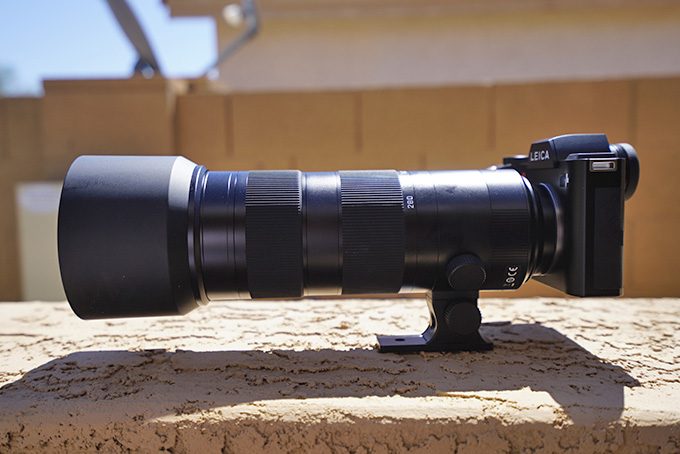
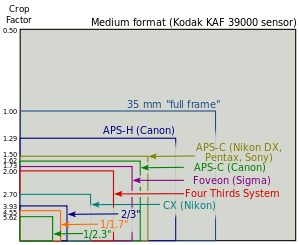
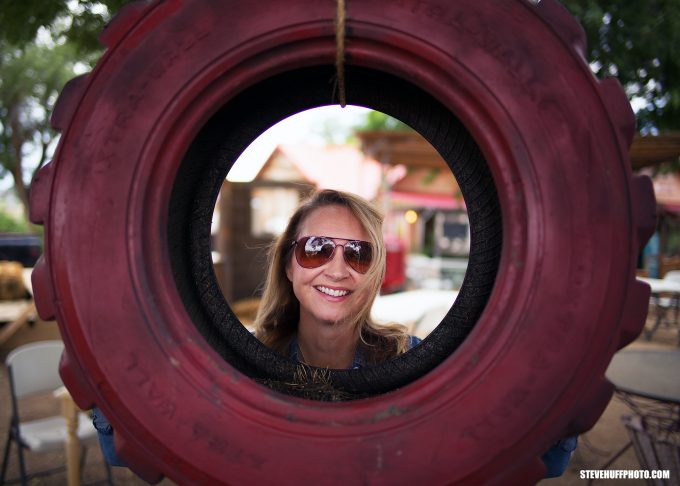
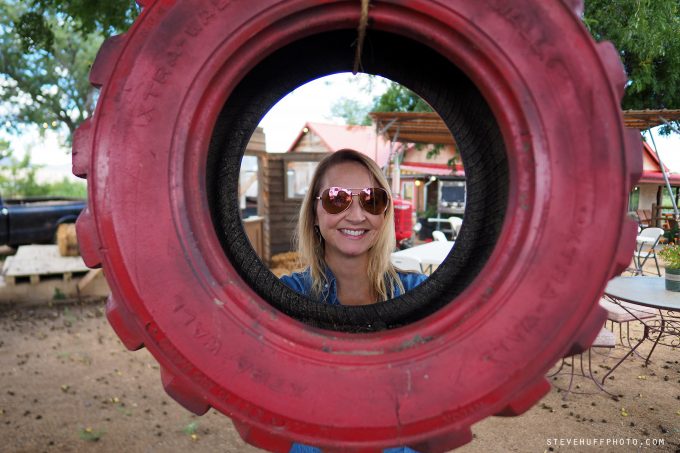


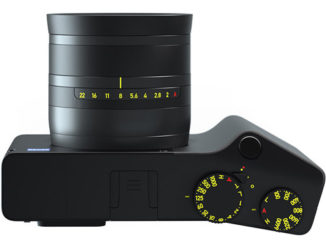
For me it comes down to the size of the camera. When I had a DSLR I rarely used it out in public do to the size of the camera. If I can’t fit the camera in a coat pocket it is basically just decoration for my desk.
With the M43rds I take my camera(GX1 w Pana 14mm 2.4)more places and it gets much more use. I will say I am considering trading in my M43rds system for a used Sony RX1.
Hello to everyone! And greeting to Steve! It’s great to have such a nice website!
I can admit, that wide angle shots are the only area, where I can see the advantage of FF over smaller formats. Yes, I get more 3D feeling form my film camera with 28/2.8 prime that I can achieve with 18/3.5 in kit zoom on APS digital. That’s true. However, in that particular case the “pop” comes also from contrast and saturation on Leica-made picture. Please note, that Debby’s face is brighter and the tyre inner rim is darker. And that also adds to our reception of sharp / unsharp transitions.
If you remember Robert Capa’s statement “If your photographs aren’t good enough, you’re not close enough.” then it really doesn’t matter what sized sensor you carry inside your camera.
Good light to all of you!!!
In my opinion, the big difference here is that for the FF shot you was nearer of your (nice) subject. That’s making a big difference in the subject isolation with a wide angle.
To my eyes there’s a huge difference in lighting. The Leica image seems like a sunnier day or at least the sun had come out for that shot. The roof behind in the Leica shot is at least a couple of stops over yet the tyre is darker than shot two which tells me the scene is much more contrasty like you find in a sunny day. The her face in shot one has caught some of that light lifting it from the background. Shot two looks sunny but a little over cast. The lighting is a lot flatter. That’s not something a lens does. I’m not saying that the Leica won’t have a dreamier look even with the same lighting, but the flatness you’re talking about comes from the lighting, you have plenty of gtreat m43 shots that aren’t flat, all better than any flat shot by any other camera regardless of sensor size, because sensor size will always be beaten out by better lighting in terms of making a picture ‘full of life’.
Demonstrating well how shitty the MFT format is.
And your ignorance
Thats utter nonsense hahaha
not as great as FF, we can agree on that.
Gates of Vienna
sorry to say but this kind of comparison makes no sense unless the conclusion is (and it wasn’t): don’t use different equipment the same way.
since you assume there are differences between full frame and m4/3, and there are substantial ones, you should adapt if you seek similar final results.
in this case you should probably use a much longer focal distance and step back to obtain a similar final result. that would be a fair comparison.
no one uses diferent equipment the same way…it makes no sense…
That is not the point! Sure, I could have used a 42.5 f/1.2 Nocticron but that would be an invalid test, 100%. I was PURPOSELY showing the difference for those new to Micro 4/3 (yes, there are many every day who are), who have no idea there is even a difference between M 4/3 and full frame or APS-C. I would have needed a 14mm on Micro 4/3 to match the effective focal length of 28mm (on the Leica) but I had a 12, which is close. If I had a 14mm, results would be 98% of what you see here. It’s to show what you get from each camera with the same (or close) effective focal length. Been doing these kind of fun tests for eight years, and it is what it is. Showing what you get from M 4/3 vs full frame using a similar effective focal length. If I used a 28mm on the Olympus, it would not have been even close to being valid, as that would have given me a 56mm focal length, not a 28mm. So using a MUCH longer focal length on the Oly would have made this just two shots with different focal lengths and formats.
i understood your objective the first time i read the article.
but then you wrote this near the end: “just show how much richer a full frame sensor can be”
you can’t take that conclusion! not when you use one equipment the right way and the other as if you never used a camera before…sorry but “you can´t”…(you can everything it´s your blog 😉 :p)
bear in mind that i agree that full frame can be richer than m4/3. if you used the both equipments the right way, your conclusion would be legit 🙂 but not this way
Most obvious are the differences in color. The shots were not made with equal light situations and the exposure doesn’t seem the same either. A fast 28mm equivalent is dearly missing for micro 4/3. But a 24mm equivalent results in something completely different. The framing is not the same either. Debbie’s face, the most crucial part, is a lot smaller and therefore so are the details in her face. If I wanted to imitate that Leica picture with micro 4/3 I would have used the 17mm or probably even a longer lens. But I mentioned that in my first reaction already.
Surely the Leica is a little better than micro 4/3. It should be, otherwise the only reason to buy it would be showing your wealth and status. Crazy comparisons are fun, but if the conditions are different as here it does not make much sense.
I don’t think the comparison is completely non sense. Sure if you take a longer lens on the micro 4/3 and step back, you can get a shot with similar depth of field, but then the perspective will be different! With the perspective being different, you can’t call it comparison of same condition neither…
Given a shooting situation (e.g. you’re in a room, there is only so much distance you can afford between photographer and subject, and you have a composition and perspective you want to archive, you want to exactly this much background and so forth…), Steve’s 2 setups give same (or close enough, because of the difference in focal length) composition and perspective, showing difference in depth of field, the sensor itself etc… I think it is a very relevant comparison.
Obviously different DOF the biggest difference here. Shallow DOF is clearly something mostly only possible with larger sensors. I wonder how the images would compare if you shot the m43 at f1.4 and the FF at f2.8 and same focal length.
By the way there are also subjects where a little more DOF is an advantage. For example I like m43 quite a lot underwater. Even at f2.8 I get decent DOF so I can keep ISO low, even in cases when I dont use flash.
Another area where I see normally advantages for larger sensors are the midtones. The m43 in comparison often looks quite contrasty.
In the end I believe DX sensors are a great compromise of both worlds and much underrated.
I own cameras with sensors from 1´´, m43, dx,FF and 30x45mm and must say that I find DX (in my case Leica T) is a very nice compromise between size, ability to play with shallow DOF (if you own fast lenses), ability to get big DOF without having to stop down too far, and dynamic range/ image quality.
über-Color
To me, the tire and Debby`s face in the Leica-shot (typical to SL) look just oversatureted and reddish.
Like a TV in Shop-Mode.
Is this the new Zeitgeist?
May be the red comes of due to harsh sunlight, but you can also see it in the earth-tone.
Yes, Full-frame gives you more room in postproduction BUT wrong Colors are wrong Colors!
I remember the discussion about the Leica switch from CCD to CMOS on this site …
As Kodak is out of the game, only foveon is left for life-like Color reproduction.
Please stop this race of pushing to the max, it hurts my eyes.
“race of pushing to the max”…no idea what this even means. Thank you.
The SL and the M240 both put our fairly saturated reds and skintones that look a little off, but other than that I love the colours from the M240. If I am shooting people I always reduce the orange channel by around -6 in LR and skintones look great after..takes 2 secs. The colours have nothing to do with CCD vs CMOS…it’s just the profile Leica have gone with.
I think it’s great that there are quick fixes that get you most of the way there. But it’s more complicated than that. To make digital look like film sounds simple, and you can get part of the way there with easy tricks, but the closer you try to get, the harder it is.
Hi Steve,
Interesting comparison. There are differences in your ‘model’ in that we’re comparing 24mm vs 28mm equivalents and as we know, the wider focal length will give a deeper sense of focus and, to be picky, you are a little further away which will also flatten out the scene. I think about the Sigma DP-2 Merrill and its’ magical ability to render almost 3D when used wide open. I miss that, but only that. Seems the sensor was helped by the longer fixed focal length lens perhaps.
Best,
Chris
A fun comparison would be to compare the same shot from the latest iphone etc to a ff sensor camera with the equivalent focal length lens.
There are far more people using phones to take photos than digital cameras. Let’s see how they size up.
Great idea 😉
If you look at JPEGS on a cell phone don’t bother with anything else for sure. That’s where most people look, share and take photos.
Cheap fun easy to post and share stuff
Bob in Chicago
Wedding pro photographers carry two Oly bodies with 2 pro sealed zooms and make a lot of money. Clearly they sell the results of their work. Perhaps the 5 axis stabilization offsets low iso by allowing lower shutter speed sharp photos. 1/2 sec 12mm shots selling to happy newly weds. The proof of the combo is in the growing number of pros using the.lighter cheaper outfit.
No surprises then and yes, a crazy comparison with the new Hasselblad (or the Pentax 645Z, same sensor I think) would be interesting too.
This quote from the article is of course what it is all about:
“Me, I find the M 4/3 shot much flatter when viewing it large. The Leica file, full frame, is loaded with life.”
There’s no escaping the law of physics, it has been said so many times before.
Great post Steve. All of the equivalence calculations mean nothing when you see a night and day comparison like this. It is also exactly what I’ve been experiencing with M43, I call it the digital look.
Of course all the crop sensor apologists come to life on such a post. The difference is undeniable though.
The difference is not the depth of field, not the field of view, not the dynamic range, but it is the tonality of the colors. They are harsh on M43. The same happens when you crop a FF image too much. The colors lose their depth and the image looks less alive.
I see the sunglass wearing girl behind one of the biggest mosquito breeding grounds around. Tire swings hold water and mosquitoes breed in them big time. Make sure some holes are in the bottom to drain the water or face the blood sucking horde.
There were zero mosquitos in the area, nor was it damp. Thank you.
If you were really to compare apples to apples you would need something like a 12mm .05 in the m4/3 version which of course does not exist..the closest comparison is the 17.5mm 0.95 in the m4/3 version(Voightlander) and you would find the pop and bokeh would be much closer to the full frame…..
Wow, that’s a big difference! Also prefer the full frame rendering over the micro 4/3.
Great comparison.
Don’t bode well for smaller sensors though. Bummer.
Nice comparison Steve. I tend to shoot FF mostly (except for travel) and agree with about the different looks that the different formats provide. Of course, it’s a persona/style thing.
For example, in the comparison above, I actually prefer the image with more depth-of-field (the 2nd image), and seeing some of the environment. FF will give that same look stopped down, and micro 4/3 can provide bokeh with a faster lens. So many choices – what a wonderful world we live in!
Great write up Steve!
It’s sometimes hard to find the right balance between size and quality.
I made a switch from the E-M1 and E-P5 (E-m5 before that) to the Sony A7s a year back and couldn’t be happier image quality wise. Sony has not once disappointed in this regard opposed to M4/3.
Despite this I still keep lurking for the designs, ergonomics and allround usability of the E-M1 /E-M5 bodies. Especially with small primes attached like the panasonic 14mm and 20mm and the only 45mm. I owned most of the Oly and Pana primes but the 14, 20 and 45 primes really make the kit shine and fit a really really small bag.
(fit the E-M1 with the 25mm 1.4, 42,5mm 1.2 or the 75mm 1.8 and is about as heavy as the Sony with a Loxia or anything similar sized)
A good picture is a good picture, it doesn’t matter much what camera it was shot with.
Nevertheless, every time I PP my pictures in Lightroom I’m satisfied with the quality that FF brings.
Although I get tempted to switch back to m4/3 from time to time, I’ve personally chosen to stay with Sony FF for now. I try to keep my kit as small as possible and force myself to bring only 1 or 2 lenses when I’m out shooting. At the moment this means bringing the Sony 16-35mm or 28mm + Loxia 50mm and in other cases I have only the Loxia 35mm with me.
Obviously I could loose the 28 or 35mm option the narrow it down some more. the 16-35 I only use when I’m dedicated to shoot cityscapes or landscapes.
BTW.: I buy al my gear used to keep things affordable (this way it doesn’t have to cost much more than a high-end M4/3 set up)
Always love your crazy comparisons, but the difference in daylight is a bit too much here. The wider angle of the micro 4/3 makes it less suitable for this shot as well. Take the Olympus 17mm, the same daylight and a more equal framing and I bet both results are more similar. Much more than the prices of the lenses.
In defense of m43: Subject isolation and bokeh make the difference here with your lovely Debby in that particular shot. It is just not possible to get equal results when comparing 28mm FF @ f1.4 to 12mm m43 @f1.4. If you’d used a Oly m.45mm or m.75mm you’d have come close to the Leica shot, if the Leica shot is taken as reference at all. Browsing the web, m43 pics show as much life and richness as FF pics do. Although with m43 there is not as much latitude in post processing as with FF. Therefore one must be more careful while taking the picture and therefore know the camera well to get the shot one wants. E.g. in low light with m43 my best choice is spot metering and M-mode and then there is not much to complain in comparison to FF. There is a endless discussion going on about pros and cons of FF and m43 when looking at the specs and technical differences only. Since it is the content that counts my first choice is m43 to grab the content I want. All a question of style and preferences in the first place.
I think all photographers could benefit by at least considering this rule-of-thumb: the narrower you want the FOV, the smaller the sensor should be.
For the same reason that a 1200mm lens on a MF body is a bit silly, a 600mm lens on a Leica format sensor would also be a bit silly. Save the hassle and cost and put a 300mm on a Micro 4/3 sensor.
What’s the point of digital technology if we keep the hangovers from film? If you’re shooting film the smallest you’d want to go is half-frame 35mm, but any smaller and you’re pushing it (for photos). But with digital you can go even smaller – look at how amazing the RX100 and RX10 are.
Don’t be surprised if you see photographers at the next Olympics shoot with the RX10. Sony has no reservations about cannibalising the Alpha cameras (and cameras by other manufacturers) with the RX cameras.
Hi Steve. I shoot both the Olympus EM1 and the Sony A7R and have to agree with your assessment of the sensors. The Olympus sensor is much less forgiving of under exposure, if you under expose the Sony sensor, no problem simply increase the exposure in post and almost no harm done. The Olympus sensor on the other hand will show much more noise requiring a lot of noise reduction.
If Olympus could get Sony to make them one of their BSI sensor like in the A7R ll camera they could probably make it 24mp and have a killer sensor and camera.
Hi Steve you mentioned Fun and i agree i enjoy using my mft camera samyang 12mm f/2 sigma 30mm f 1.4 and the oly 17mm f 1.8 and my favorite 75mm f 1.8 i often read about why one system is better etc… i do not care about such things, that’s in part why i read what is written on your site and see and listen to what you say your enjoyment of photography shines through, i am interested in your experence with the for mentioned Lecia 12mm regards Richard
Hi Steve,
I use a Lumix GX8 for press photography. A 12-35/ 2.8 Vario and the superb Leica DG 100-400.
That’s my presse kit.
I sold my M240 some months ago cause it was too noisy – the GX8 is inaudible.
Next step for me is the SL, cause the full frame performs better and richer images, as you’re pointing out.
Enjoy the weekend!
Paul
Hi.I think it is many years since foveon was smaller than APS C ,sobit should be like that and slightly larger than the canon.
H
Hi Steve,
You mention the points! Depending on your shooting requirements nowadays one has a choice of systems. Personally I use Leica M for street and as my main camera. When hiking or travelling I use Oly with pro zooms. Weight and size are the main reasons for this, and the quality is good enough. After 30 years with SLR I will never go back to such a heavy system!
Best,
Wolfgang
Thanks Steve great article, and I like your conclusion.. it makes sense to own a couple of format options available to suit the situation. I must say though, if I had $12k to spend on my serious photography, I would buy the new Hasselblad X1-D mirrorless medium format with 90mm lens for the same money. Now wouldn’t THAT be a crazy comparison!!!